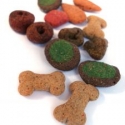
Because birds are prey animals, they'll mask signs of illness until they can't fake it any longer. This helps them survive in the wild, where predators look specifically for the weak and ill animals in a flock in order to take them down more easily. As a bird owner, therefore, you need to be aware of the common signs of illness so that you can get your pet bird help as soon as possible. Keep in mind, though, that once symptoms occur, the bird is usually very sick, so treatment may be difficult. If your pet bird is showing any signs of neurological problems, such as seizures, if he is having difficulty breathing, or if he is injured or weak, bring him to an avian veterinarian to be examined right away. Below are just five of the many signs that indicate your pet bird isn't feeling well. As with all other ...











